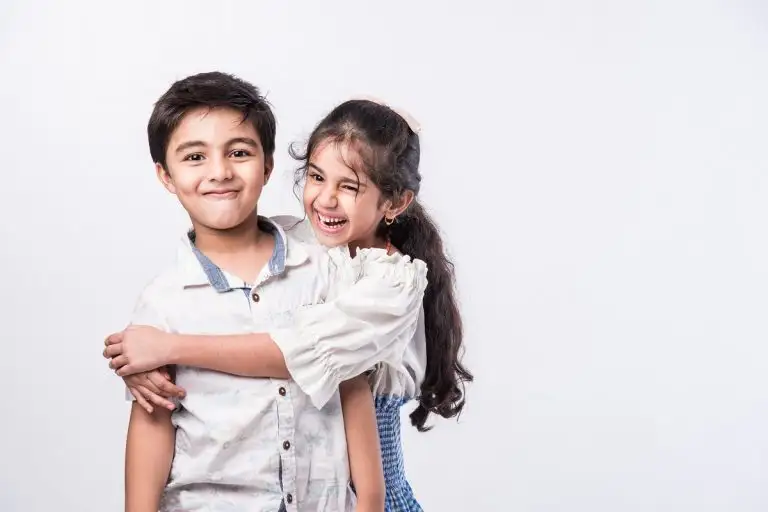Migraine is a common disorder in children. 3.5-5% of children will experience recurrent headaches consistent with migraine.
Q: What are the presentation and symptoms?
Ans: The presentation is varied and varies according to patient age, as follows:
- Infants may present with only episodic “headbanging”
- Preschool children often have episodes involving an ill appearance, abdominal pain, vomiting, and the need to go to sleep; they may exhibit pain by irritability, crying, rocking, or seeking a dark room in which to sleep
- Children aged 5-10 years typically have a bifrontal, bitemporal, or retro-orbital headache; nausea; abdominal cramping; vomiting; photophobia; phonophobia; a need to sleep; migraine facies; tearing, swollen nasal passages; thirst; edema; excessive sweating; increased urination; or diarrhea
- Older children may experience increasing headache intensity and duration; a pulsating or throbbing character to the headache; and a shift to a single side.
- The General Physical Examination in a child with migraine should be normal.
Lab studies: Not indicated in Migraine but have a role in excluding other diseases.
In any Headache three studies are vital.
- Hemoglobin
- Thyroid function test
- Vision examination and Fundus Examination
Q: What is the role of CT scan or MRI
Ans: It is indicated only when the child is having an abnormal neurological examination, gaze-palsies, or examinations that suggest mass or tumor inside the cranial cavity.
Q: Phases of Migraine:
A migraine attack has 4 potential phases, as follows:
- Prodrome
- Aura
- Headache
- Postdrome
1. Prodrome is characterized by one or more of:-
- Irritability
- Elation or sadness
- Talkativeness or social withdrawal
- Increased or decreased appetite
- Food craving or anorexia
- Water retention
- Sleep disturbances
2. Aura
Only 10-20% of children with migraine experience an aura. The aura usually precedes the headache by less than 30 minutes and lasts for 5-20 minutes.
Children are often unaware of their aura or are unable to describe it. Pictorial cards that illustrate typical visual auras may aid in obtaining an accurate history.
Visual auras (which are often reported as moving or changing shapes) may consist of any of the following:
- Blurred vision
- Fortification spectra (zigzag lines)
- Scotomata (field defects)
- Scintillations
- Black dots
- Kaleidoscopic patterns of various colors
- Micropsia or macropsia (distortion of size)
- Metamorphopsia (“Alice in Wonderland” syndrome): distorted objects
- Nonvisual auras include the following:
- Attention loss
- Confusion
- Amnesia
- Agitation
- Aphasia
- Ataxia
- Dizziness
- Vertigo
- Paresthesia
- Hemiparesis
3. Headache
Headaches can last 30 minutes to 48 hours but are usually less than 4 hours. Some young patients report headaches lasting 10-20 minutes. Childhood migraine headaches are often less severe than adult migraine headaches.
During the headache phase, the migraineur may experience any of a range of associated symptoms, as follows:
- Cold extremities
- Nausea
- Anorexia
- Vomiting
- Diarrhea
- Increased urination
- Constipation
- Dizziness
- Chills
- Excessive sweating
- Ataxia
- Numbness
- Photophobia
- Phonophobia
- Memory loss
- Confusion
- Postdrome
After the headache phase, the patient may feel either elated and energized or, more typically, exhausted and lethargic. This stage of migraine may last from hours to days.
Q: How to treat?
Ans: The first step in migraine treatment is to explain the disease to the child and the parents. The patient and parents benefit from a simple explanation of the headache pain and reassurance that it is not caused by a brain tumor or other life-threatening condition.
A regular bedtime, strict meal schedules, and avoidance of overloading the child’s schedule with activities. Eliminating precipitating triggers reduces the frequency of headaches in some patients.
A headache diary can be used to record unique triggers and features of the attack.
During the attack, advise the child to lie down in a cool, dark, quiet room and go to sleep at the time of the attack. Sleep is the most potent antimigraine treatment. During a migrainous attack, a child commonly can be found resting in the fetal position with the affected side of the head down.
Children should be given simple analgesics such as acetaminophen or ibuprofen. They should be taught to “give in” to their headache because the activity will probably aggravate their pain
Other Medicines: There is a lot I am not discussing here because they must be started after consultation.
- Patient Education
- Instruct patients to identify triggers.
Parents are to make a follow-up appointment with a doctor if the headaches worsen, if they do not respond to medications, or if adverse effects are intolerable. Several medication trials often are necessary before adequate headache control is achieved.
Patients should have realistic expectations; while pharmacotherapy lessens the impact of migraine, it does not eliminate the cause which must be identified and treated accordingly.
By Dr. Virender Verma
Consultant Neonatologist
Wockhardt Hospitals, Mira Road


















